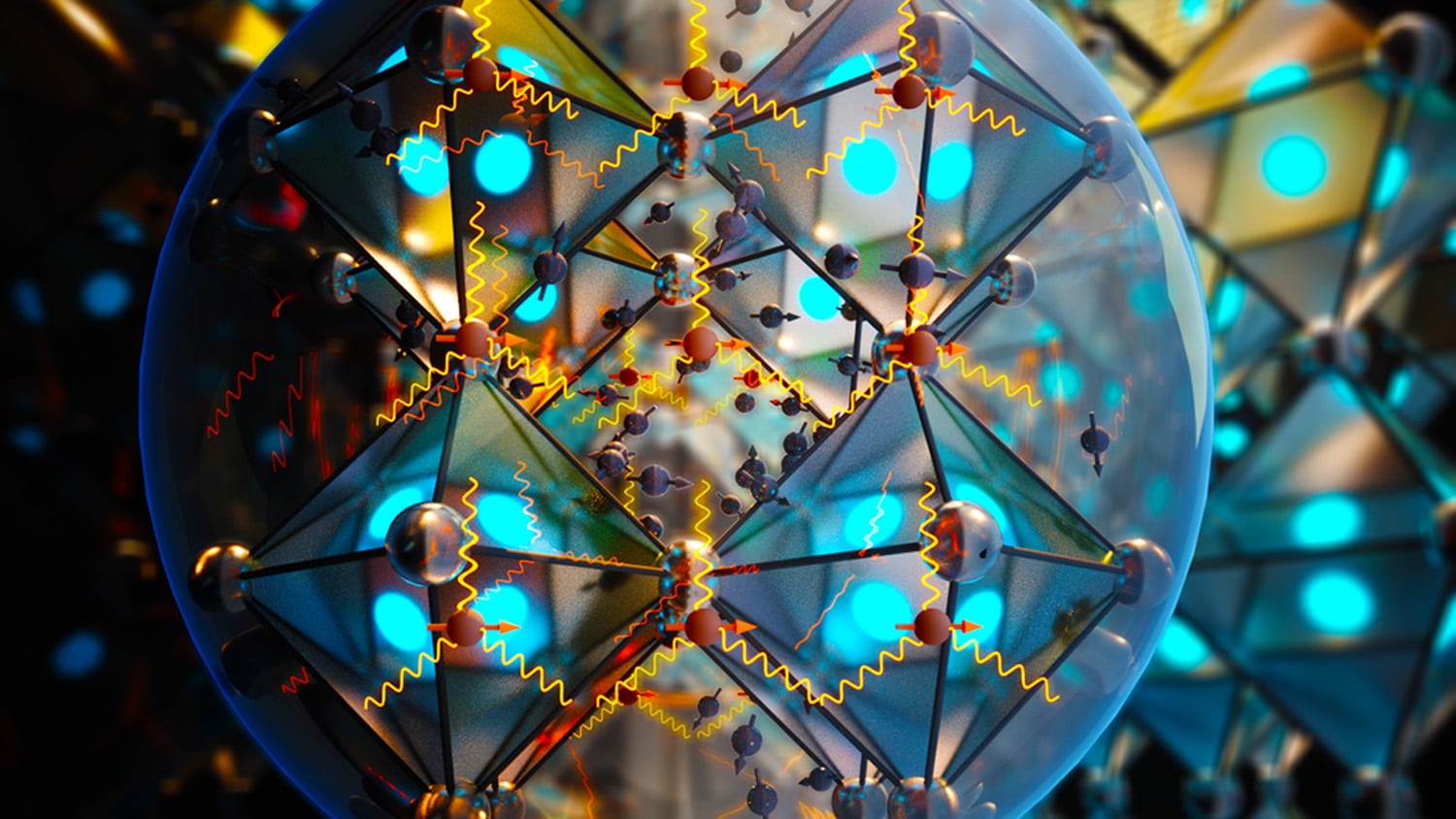Common Perovskite Superfluoresces at High Temperatures

For Immediate Release
A commonly studied perovskite can superfluoresce at temperatures that are practical to achieve and at timescales long enough to make it potentially useful in quantum computing applications. The finding from North Carolina State University researchers also indicates that superfluorescence may be a common characteristic for this entire class of materials.
Superfluorescence is an example of quantum phase transition – when individual atoms within a material all move through the same phases in tandem, becoming a synchronized unit.
For example, when atoms in an optical material such as a perovskite are excited they can individually radiate light, create energy, and fluoresce. Each atom will start moving through these phases randomly, but given the right conditions, they can synchronize in a macroscopic quantum phase transition. That synchronized unit can then interact with external electric fields more strongly than any single atom could, creating a superfluorescent burst.
“Instances of spontaneous synchronization are universal, occurring in everything from planetary orbits to fireflies synchronizing their signals,” says Kenan Gundogdu, professor of physics at NC State and corresponding author of the research. “But in the case of solid materials, these phase transitions were thought to only happen at extremely low temperatures. This is because the atoms move out of phase too quickly for synchronization to occur unless the timing is slowed by cooling.”
Gundogdu and his team observed superfluorescence in the perovskite methyl ammonium lead iodide, or MAPbI3, while exploring its lasing properties. Perovskites are materials with a crystal structure and light-emitting properties useful in creating lasers, among other applications. They are inexpensive, relatively simple to fabricate, and are used in photovoltaics, light sources and scanners.
“When trying to figure out the dynamics behind MAPbI3’s lasing properties, we noticed that the dynamics we observed couldn’t be described simply by lasing behavior,” Gundogdu says. “Normally in lasing one excited particle will emit light, stimulate another one, and so on in a geometric amplification. But with this material we saw synchronization and a quantum phase transition, resulting in superfluorescence.”
But the most striking aspects of the superfluorescence were that it occurred at 78 Kelvin and had a phase lifetime of 10 to 30 picoseconds.
“Generally superfluorescence happens at extremely cold temperatures that are difficult and expensive to achieve, and it only lasts for femtoseconds,” Gundogdu says. “But 78 K is about the temperature of dry ice or liquid nitrogen, and the phase lifetime is two to three orders of magnitude longer. This means that we have macroscopic units that last long enough to be manipulated.”
The researchers think that this property may be more widespread in perovskites generally, which could prove useful in quantum applications such as computer processing or storage.
“Observation of superfluorescence in solid state materials is always a big deal because we’ve only seen it in five or six materials thus far,” Gundogdu says. “Being able to observe it at higher temperatures and longer timescales opens the door to many exciting possibilities.”
The work appears in Nature Photonics and is supported by the National Science Foundation (grant 1729383). NC State graduate students Gamze Findik and Melike Biliroglu are co-first authors. Franky So, Walter and Ida Freeman Distinguished Professor of Materials Science and Engineering, is co-author.
-peake-
Note to editors: An abstract follows.
“High Temperature Superfluorescence in Methyl Ammonium Lead Iodide”
DOI: 10.1038/s41566-021-00830-x
Authors: Gamze Findik, Melike Biliroglu, Dovletgeldi Seyitliyev, Juliana Mendes, Andrew Barrette, Hossein Ardekani, Lei Lei, Qi Dong, Franky So, Kenan Gundogdu, North Carolina State University
Published: June 21, 2021 in Nature Photonics
Abstract:
Light-matter interactions can create and manipulate collective many-body phases in solids, which are promising for the realization of emerging quantum applications. However, in most cases these collective quantum states are fragile, with a short decoherence and dephasing time, limiting their existence to precision tailored structures under delicate conditions such as cryogenic temperatures and/or high magnetic fields. In this work, we discovered that the archetypal hybrid perovskite, MAPbI3 thin films, exhibit such a collective coherent quantum many-body phase, namely superfluorescence, at 78 K and above. Pulsed laser excitation first creates a population of high energy electron-hole pairs, which quickly relax to lower energy domains and then develop a macroscopic quantum coherence through spontaneous synchronization. The excitation fluence dependence of the spectroscopic features and the population kinetics in such films unambiguously confirm all the well-known characteristics of superfluorescence. These results show that the creation and manipulation of collective coherent states in hybrid perovskites can be used as the basic building blocks for quantum applications.
- Categories:


